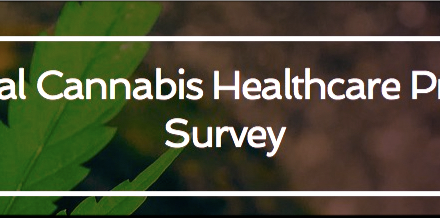After attending the August 30 meeting of the Medical Board of California’s Cannabis Task Force, Perry Solomon sent this email to Executive Director Kimberly Kirchmeyer:
From: Perry Solomon <perry@hellomd.com> Subject: Medical Board Meeting
Date: September 1, 2017 at 9:57:58 AM PDT
To: “Kimberly.Kirchmeyer@mbc.ca.gov” <Kimberly.Kirchmeyer@mbc.ca.gov>Ms. Lawson, Dr. Krauss and Ms. Kirchmeyer,
Thank you for the opportunity to speak at the Sub Committee meeting on Wednesday. I am glad that the issue of “physical exams” was deleted and that cannabis evaluations will continue to be performed by telehealth means.
Now that I have had time to read the Appendix 2 Medicinal Cannabis Agreement that was first presented at the start the of the meeting, I have some comments about it.
Firstly just in broad strokes. The comparison with this document and any opioid agreement cannot be made. Opioids have been studies for years and all dosages, products and manufacturers have all been vetted and comply with testing of the specific products that are discussed between physician and patient. The same obviously cannot be done for cannabis. While in January 2, 2018 this si to be done, at this point in time, and possibly not until after that date, will consistency be realized in the cannabis marketplace.
Secondly, and specifically to tele-evaluations, the comment was made that patients could see a pdf, download it, sign it, scan it and send it back to the physician. That would mean that a patient would have to know what a pdf file was, how to download and print it, actually own a printer/scanner, figure out how to scan it, etc. It would then, whenever they can actually do all of this sometime days, weeks, months after they already have their recommendation, be joined with their e-records. I can tell you for a fact, that we have patients who do not know where the camera is on their cell phone and computer! In other words it will be impossible for them to sign this document. This of course is not the case with a person obtaining opioids from their physician in person when they can sign something right there.
Thirdly, all of the dosages, time of holding inhalational cannabis etc, were made, from what we are told, from evaluating a grand total of 6! patients in a study several years ago. This hardly is a large enough sample to make a written recommendation. As well as the fact that there is no mention as to the THC, CBD concentration that was done or the type of cannabis consumed. All of which make a difference. Has it in fact been shown that “smoking cannabis with tobacco” reduces the risk of lung disease! Where is this documentation? As well as the time frames for driving a car?
I really can go on and on as to why this “Agreement” should not be given the stamp of approval from the Medical Board by including it in your Guidelines. By placing it there you are in fact agreeing with these erroneous suppositions and quite frankly, stepping into the doctor-patient relationship by instructing a physician how to specifically recommend cannabis.
While I understand that the Board must protect the patients, I think that the private discussion of the risks of cannabis, how to use it, etc be left to the physician to discuss with their patient and notate it in the medical record. This document can be made available to physicians as suggestions of topics to discuss with their patient, if they feel that it appropriate and if they agree with the information that it contains. And while this is voluntary document for the patient to sign, I worry that it would become a de facto requirement, which as I mentioned above, is impossible to complete with a tele-evaluation for many of our patients.
I would be happy to discuss this and any of the comments I made at the meeting with the Board at any time.
Perry Solomon, MD
Chief Medical OfficerHelloMD.com
925-413-7803
perry@hellomd.com





